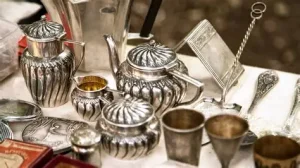Every tap leaves a trace. Mobile Forensics has evolved into one of the most intricate sciences in the digital realm. It dives beneath the screen, uncovering the unseen layers of data that define modern life. In an era where everything is recorded, recovery has become a new form of truth.

The essence of mobile forensics lies in invisibility. It operates between technology and psychology, interpreting not just data but intention. What once was a matter of storage is now a study of human behavior encrypted in code. Every text, image, or log becomes a fragment of digital consciousness.
Mobile forensics today transcends traditional investigation. It no longer focuses solely on extraction but interpretation. The challenge is not retrieving information—it is understanding the patterns that bind it. This evolution makes it a discipline of logic, ethics, and precision.
The boundaries of mobile devices have expanded into ecosystems of interconnected data. Cloud sync, encrypted apps, and cross-platform communication redefine what evidence means. Mobile forensics adapts by tracing pathways that extend beyond the device itself. It follows digital fingerprints across invisible networks.
Modern mobile forensics is built upon the fusion of intelligence and intuition. The specialist must think like both a detective and a developer. Every byte tells a story, but context gives it meaning. The analysis transforms chaos into clarity through disciplined curiosity.
As technology advances, encryption deepens. Security once meant protection, but it now represents complexity. Mobile forensics thrives in decoding this duality, where privacy and accountability collide. The discipline seeks balance between freedom and responsibility.
Artificial intelligence has begun shaping how data is examined. Algorithms can now recognize patterns that the human mind may overlook. Yet the human element remains irreplaceable in interpretation. Mobile forensics, at its heart, remains a dialogue between machine precision and human judgment.
The concept of data persistence challenges assumptions about deletion. What disappears from view may still exist in fragments. Mobile forensics transforms these remnants into revelations, restoring what was meant to be forgotten. It teaches that nothing digital truly vanishes—it only hides.
Temporal analysis is another emerging frontier. Mobile forensics reconstructs timelines with millisecond accuracy. It does not just answer what happened, but when and in what sequence. This precision transforms data from evidence into narrative.
The psychology of communication also enters the field. Mobile forensics deciphers tone through context, frequency, and metadata. Words are only the surface; patterns reveal emotion and intention. It blends linguistic understanding with computational rigor.
Cloud integration has redefined the limits of investigation. Mobile forensics now extends its reach to virtual storage where fragments disperse endlessly. The task is to reassemble the puzzle without losing authenticity. Each recovered element must maintain its integrity under scrutiny.
With the rise of encrypted communication, access no longer guarantees clarity. Mobile forensics develops new methods to interpret structure rather than content. Message length, time intervals, and behavior flow reveal more than text itself. Silence becomes as informative as speech.
Mobile forensics has also begun exploring behavioral biometrics. Touch patterns, motion data, and even typing rhythm create unique digital identities. These subtle markers act as invisible signatures. The field now reads the rhythm of human interaction as a form of evidence.
The ethical dimension of mobile forensics continues to grow. The power to uncover must be balanced with the duty to protect. Specialists operate within moral frameworks as much as technical ones. Transparency and accountability form the invisible spine of the practice.
Mobile forensics is also confronting the rise of disposable data. Temporary content, disappearing messages, and ephemeral media create challenges for permanence. Yet traces linger in unseen caches, revealing the paradox of modern privacy. The ephemeral becomes eternal once analyzed.
Location data, long underestimated, has become a storytelling tool. Mobile forensics reconstructs movement like chapters in a journey. Each coordinate blends into motive, opportunity, and connection. Geography turns from backdrop to evidence.
The evolution of mobile hardware presents both opportunity and complexity. Each model introduces new architectures, storage protocols, and encryption layers. Mobile forensics adapts with continuous innovation. It must evolve as quickly as the devices it deciphers.
Forensic imaging remains central to ensuring data integrity. Cloning without alteration preserves the authenticity of information. This process embodies the discipline’s commitment to truth. Every replica must reflect the original without distortion.
Mobile forensics now intersects with cybersecurity. Prevention and investigation have begun merging into a single continuum. By understanding breaches, the field also learns to fortify systems. This integration marks a shift from reaction to anticipation.
Data extraction once meant physical access. Today, remote acquisition and logical recovery define the norm. Mobile forensics explores ways to gather without intrusion. The goal is to reveal while preserving the sanctity of personal boundaries.
Emerging tools use artificial learning to predict relationships within datasets. Mobile forensics interprets these links to map networks of communication and influence. What once required manual correlation now happens through intelligent automation. The result is faster insight without sacrificing accuracy.
Digital artifacts have grown more abstract. It is no longer about visible files but hidden frameworks of metadata and behavior. Mobile forensics traces these subtle signals that encode human interaction. It reads the invisible currents beneath everyday communication.
Legal frameworks are now evolving to match technological speed. Mobile forensics operates within laws that must constantly adapt. The balance between evidence and privacy is delicate and dynamic. The field’s credibility depends on maintaining that equilibrium.
The introduction of quantum security looms on the horizon. When encryption becomes theoretically unbreakable, mobile forensics will face its greatest test. Innovation will shift from decryption to behavioral inference. Understanding users will become as vital as understanding devices.
Energy efficiency and environmental factors also affect forensic processes. As data storage grows denser, retrieval demands higher precision with less power. Mobile forensics must evolve sustainably. The future investigator may analyze not just data but the carbon cost of discovery.
The relationship between mobile forensics and digital ethics grows closer each year. The right to be forgotten collides with the need for accountability. The discipline must navigate these moral crossroads with care. Every recovery carries weight beyond the data itself.
Emerging technologies such as augmented and mixed reality introduce new layers of interaction. Mobile forensics now considers how digital experiences overlay physical behavior. Evidence may no longer exist in one realm but across both. This convergence reshapes the definition of proof.
Wearable integration expands the boundary further. Devices that measure health, motion, and emotion add personal depth to digital evidence. Mobile forensics transforms physiological data into behavioral maps. Each heartbeat may one day testify in a digital narrative.
Predictive analysis introduces foresight into investigation. By studying behavioral trends, mobile forensics can anticipate future risks. This shift from reactive discovery to proactive prevention is revolutionary. It changes the role from observer to guardian.
The democratization of technology also means that mobile forensics must become accessible. Simplicity without compromise is the new goal. Tools must serve both experts and those who protect digital rights. Empowerment, not exclusivity, defines the next phase.
Cultural adaptation remains an overlooked dimension. Communication styles, slang, and digital customs differ across societies. Mobile forensics now studies digital linguistics to avoid misinterpretation. Context becomes as vital as code.
The next wave of research explores emotional mapping within digital interaction. Tone analysis and sentiment recognition merge with forensic inquiry. Mobile forensics begins to trace not just what was said but how it was felt. Emotion becomes evidence.
In crisis management, mobile forensics plays a hidden yet crucial role. Rapid recovery of lost communication can save more than information—it can save lives. The speed of extraction now defines the impact of intervention. Technology becomes an ally in human resilience.
Training for specialists must evolve alongside the tools. Future practitioners need emotional intelligence as much as technical expertise. Mobile forensics demands patience, precision, and ethics in equal measure. The ideal investigator balances insight with integrity.
As the line between personal and professional data blurs, forensics must learn restraint. The ability to find everything does not mean everything should be found. Selectivity becomes a virtue. Preservation of dignity complements the pursuit of truth.
Digital minimalism influences how people now use devices. Fewer apps, less clutter, and intentional design change data trails. Mobile forensics adapts by finding meaning in scarcity rather than abundance. Each trace gains more value when fewer exist.
The rise of synthetic data and virtual identities adds another layer of challenge. Mobile forensics must learn to distinguish reality from replication. Authenticity will soon depend on the ability to verify not just content but creation. Truth itself becomes a code to decode.
As automation deepens, the human role becomes philosophical. Mobile forensics may evolve from retrieval to reflection—understanding why people create what they later erase. It transforms investigation into introspection. The data becomes a mirror of motive.
Ultimately, mobile forensics is not about control but comprehension. It reveals how the digital and human worlds intertwine. Each recovered byte carries fragments of consciousness, memory, and intent. In its precision, mobile forensics preserves the humanity hidden within technology.
The hidden depths of mobile forensics stretch far beyond the device itself. It is a science of trust built on fragments of truth. As our dependence on technology grows, so too does our need to understand its echoes. And in that pursuit, mobile forensics becomes more than investigation—it becomes interpretation of the modern human experience.


